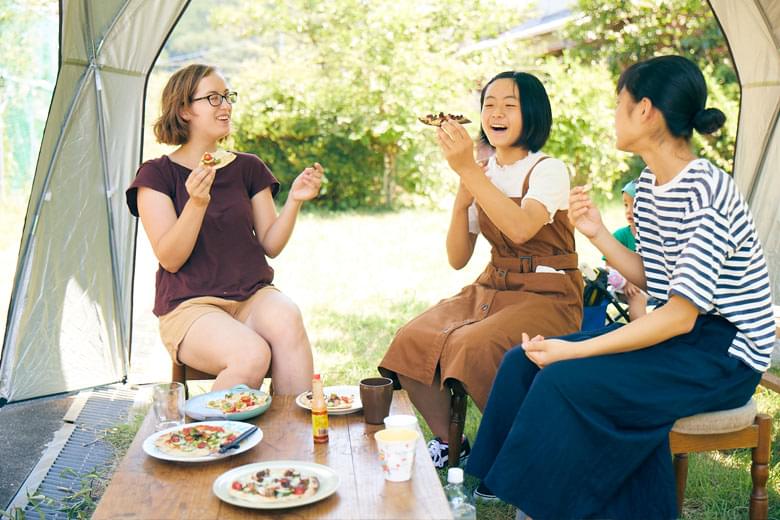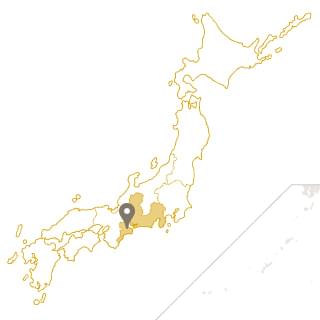Centered on Sakakibara-Onsenguchi Station, the little town of Hakusan-cho is surprisingly well connected to major cities—under one and a half hours by train from Osaka, Nagoya, and Kyoto. Very walkable and bikeable, this is an ideal spot to experience rural Japanese life without having to rent a car.
Originally several small towns, the Hakusan-cho area was an important stop on the Hase Kaido—an ancient trade route that connected the city of Sakurai in Nara Prefecture with Matsusaka in Mie Prefecture—and frequently welcomed travelers. The tradition of hospitality lives on today thanks to a group of young returnees and new inhabitants who are putting the town on the map with their eco-friendly businesses.
A Sweet Welcome to Inosan Farm
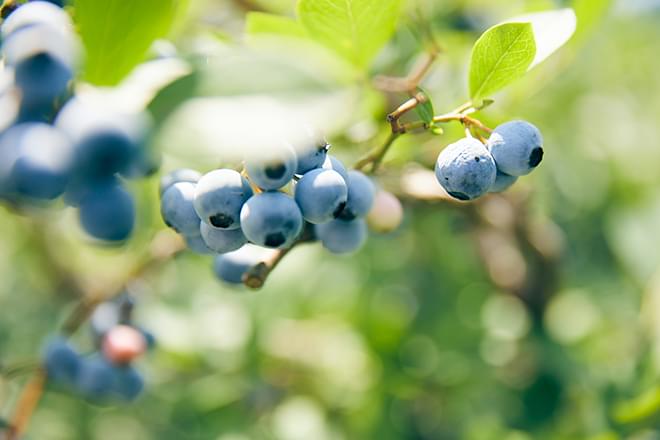
Once off the train, visitors should wander up to Inosan Farm to sample their delicious summer blueberries (or winter strawberries).The farm’s name is a play on words that combines the name of nearby Inokura Onsen with the word “innocent” and shows owner Okada Takayuki’s commitment to creating healthy food and preserving nature. The sweet blueberries found here are GAP (Good Agricultural Practices) certified, which is great for conscious consumers.
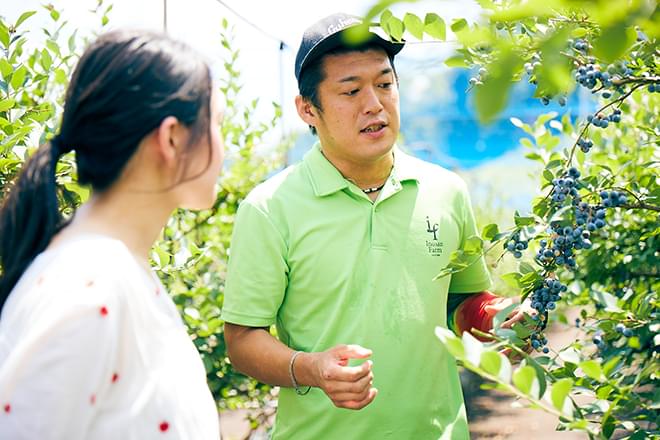
From mid-July to late August, visitors can pick and eat blueberries right off the bush with a 60-minute all-you-can-eat blueberry bonanza! From January to May, they offer a 45-minute all-you-can-eat strawberry picking, with five varieties of delicious strawberries to choose from!
- Name:
- Inosan Farm
- Address:
- 2745-1 Hakusan-cho Sada, Tsu, Mie Prefecture
- Tel:
- 059-264-0550
- Email:
- info@inosan-farm.co.jp
- Opening hours:
- 10 a.m.–4 p.m.
- Closed:
- Mondays (from January to May: Mondays and Thursdays).
Relaxing in the Hot Springs of Inokura Onsen
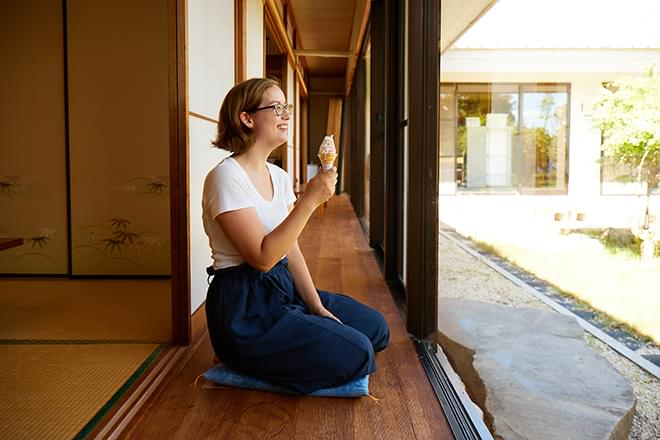
A hot-spring village on a quiet hill, Inokura Onsen is just a short walk from Inosan Farm. For the full experience, check into Huyousou, which offers three types of Japanese-style tatami rooms overlooking the gardens.

However, you don’t have to be a guest to enjoy the hot springs. Day-trippers who just want to drop in for a quick soak can visit nearby Shirasagien and relax while soaking in the surrounding mountain scenery for a modest fee. Before leaving, be sure to check out the many tanks of medaka (Japanese rice fish)!
- Name:
- Inokura Onsen
- Address:
- 2562-1, Hakusan-cho Sada, Tsu City, Mie Prefecture
- Tel:
- 059-262-5888
- Email:
- inokura@inetmie.or.jp
Meet Locals over Dinner at Wayoshoku Miyata
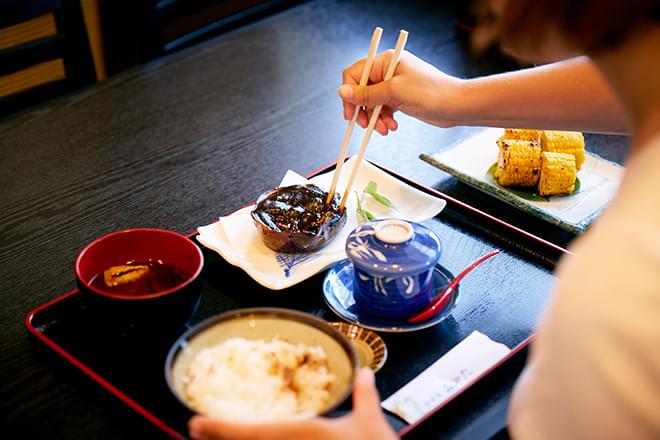
While guests staying at Huyousou can opt for a dinner of Mie specialties served in their room, another great option is to head to Wayoshoku Miyata, a beloved izakaya (pub) that acts as Hakusan-cho’s main watering hole. This is where locals gather to chat and sip a well-earned beer. The menu is surprisingly vast, and dishes are often accompanied by a serving of the locally grown Ichishimai rice. One popular dish is the marunasu no dengaku, a whole round eggplant grilled and coated with a layer of savory miso. Meat lovers should try the miso katsu (pork cutlet with miso sauce) or indulge in the pride of Mie Prefecture, juicy Matsusaka beef!
- Name:
- Wayoshoku Miyata
- Address:
- 120-7, Hakusan-cho Nakanomura, Tsu City, Mie Prefecture
- Tel:
- 059-262-0777
- Opening hours:
- 11 a.m.–2 p.m. and 5 p.m.–9 p.m. (weekdays)
11 a.m.–9 p.m. (weekends)
- Closed:
- Thursdays
Wander among the Rice Paddies and Harvest-Fresh Veggies
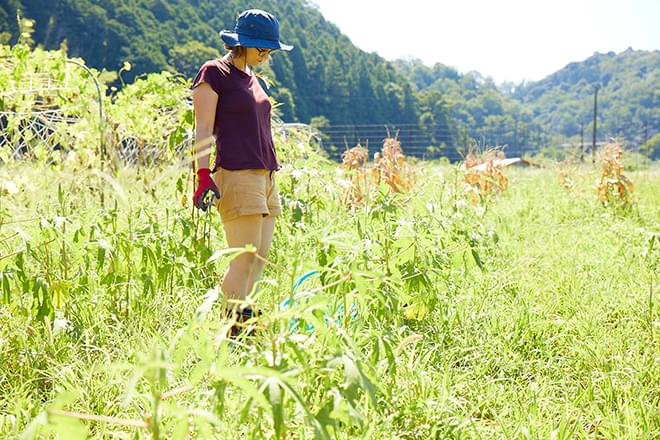
Just a short walk down from Inokura Onsen you will find yourself in rice heaven! Take in the views of the fields as you make your way to Guest House Ilonggo, where during the summer months guests can join in on vegetable picking with owners Mari Kurata and Harold Francisco.

From July to September, their garden overflows with a huge variety of veggies, including some Filipino vegetables not commonly grown in Japan. Summer gourds, tender water spinach, and black-eyed peas go into the basket, followed by other hot-season favorites like cherry tomatoes, okra, sweet pepper, and more. This natural bounty will reappear on the dinner table, and guests can learn how to make Japanese and Filipino dishes from scratch.

Mari Kurata spent many years in the Philippines, returning a few years ago to take over her family home and restore the farmland, which had lain fallow. Along with her husband and children, she regularly welcomes guests who want to experience a more sustainable way of living and learn about growing their own food.
- Name:
- Guest House Ilonggo
- Address:
- 1647 Hakusan-cho Sada, Tsu, Mie Prefecture
- Tel:
- 090-4415-4042
- Activity:
- Agricultural experience
Cool Down at River Park Mami
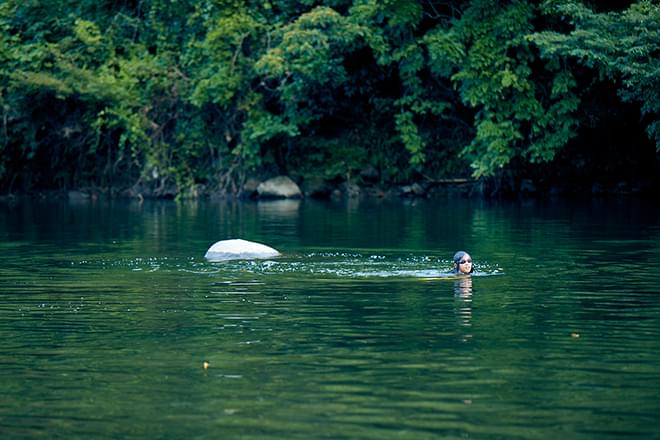
After a morning of picking and munching garden-fresh veggies, there is nothing better than borrowing one of the electric bikes at Guest House Ilonggo and zipping down to this riverside park to cool off. The most popular summer swimming spot in Hakusan-cho is here, and its refreshing water is crystal clear and clean and gushes directly from the source of the Kumozu River. Other seasonal highlights include spring cherry blossoms and colorful leaves in autumn.
- Name:
- River Park Mami
- Address:
- 871 Hakusan-cho Mami, Tsu, Mie Prefecture
Get a Taste for Rural Life at Guesthouse Ilonggo
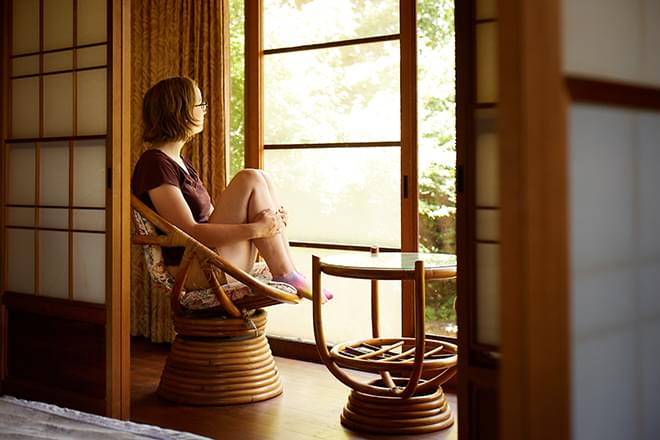
This guesthouse is a great place to experience real Japanese farm life—with a Filipino twist! As they accept only two groups per night, you are sure to have plenty of time to chat or relax as you please. Besides vegetable picking, Mari and Harold can also arrange wild-game trapping with a certified hunter between November and March, which helps locals keep the deer and boar populations in check.
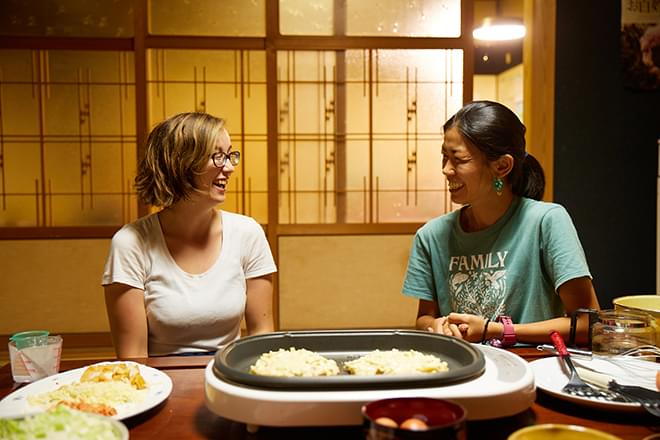
Guest House Ilonggo is a hands-on kind of place, where you can learn to make local favorites like okonomiyaki (savory pancakes) and nabe (hot pot)—or literally go whole hog and have a lechon (whole roast suckling pig) party. Mari aims to provide good, simple home cooking for her guests and can also accommodate vegetarians and vegans. Children and pets are welcome at the guesthouse and are sure to have a memorable time exploring the great outdoors and farms of Hakusan-cho.
